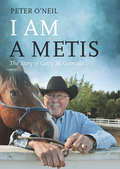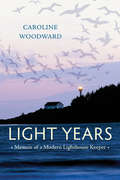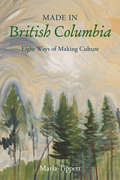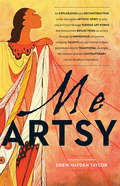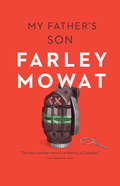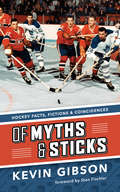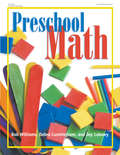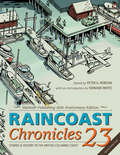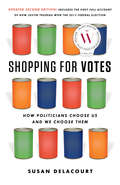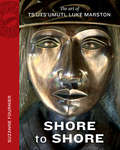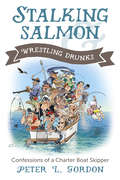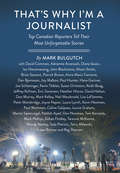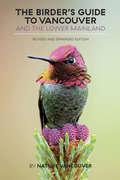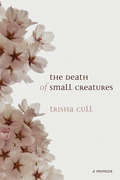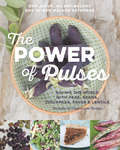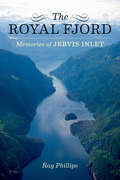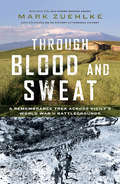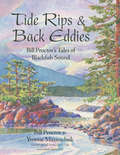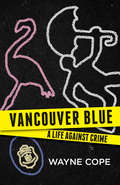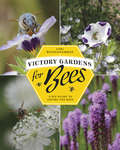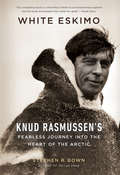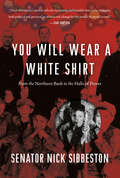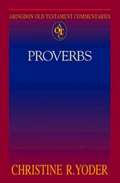- Table View
- List View
I Am a Metis: The Story of Gerry St. Germain
by Peter O'NeilGerry St. Germain's story begins in "Petit Canada" on the shores of the Assiniboine, growing up with his two younger sisters, his mother and his father-a shy Metis trapper and construction worker who sometimes struggled to put food on the table. St. Germain was initially troubled in school, scrapping with classmates and often skipping out to shoot pool, but an aunt and uncle funded his tuition to Catholic school, where a nun recognized his aptitude for math and encouraged him to pursue his dreams. He would go on to become an air force pilot, undercover policeman and West Coast chicken farmer. Business gave way to politics, and in 1988 he became one of a tiny number of Aboriginal Canadians named to a federal cabinet. That milestone was just one of many for a man who played a critical role in Canada's Conservative movement for a generation.From the Brian Mulroney era to the roller-coaster leadership of Kim Campbell, then to the collapse of the Progressive Conservative Party in 1993 and the subsequent rebuilding of the movement under Stephen Harper, St. Germain remained a trusted confidant of prime ministers and a crucial and often daring behind-the-scenes broker in bringing warring factions together. But he is most proud of his efforts during his later years in the Senate, when he was a quiet hero to Canada's Aboriginal community. He spearheaded major Senate reports on key issues like land claims and on-reserve education during the Harper era, when there were few friendly faces for First Nations leaders on Parliament Hill. That role reflected St. Germain's profound determination to help people who are still dealing today with the brutal legacy of residential schools and the paternalistic Indian Act. Memories of his humble beginnings, and the shame he once felt over his Metis heritage bubbled to the surface in his final address to Canada's Parliament in 2012, when he said in a voice quaking with emotion: "I am a Metis."
Light Years
by Caroline WoodwardIn 2007, Caroline Woodward was itching for a change. With an established career in book-selling and promotion, four books of her own and having raised a son with her husband, Jeff, she yearned for adventure and to re-ignite her passion for writing. Jeff was tired of piecing together low-paying part-time jobs and, with Caroline's encouragement, applied for a position as a relief lightkeeper on a remote North Pacific island. They endured lonely months of living apart, but the way of life rejuvenated Jeff and inspired Caroline to contemplate serious shifts in order to accompany him. When a permanent position for a lighthouse keeper became available, Caroline quit her job and joined Jeff on the lights. Caroline soon learned that the lighthouse-keeping life does not consist of long, empty hours in which to write. The reality is hard physical labour, long stretches of isolation and the constant threat of de-staffing. Beginning with a 3:30 a.m. weather report, the days are filled with maintaining the light station buildings, sea sampling, radio communication, beach cleanup, wildlife encounters and everything in between. As for dangerous rescue missions or dramatic shipwrecks--that kind of excitement is rare. "So far the only life I know I've saved is my own," she says, with her trademark dry wit. Yet Caroline is exhilarated by the scenic coastline with its drizzle and fog, seabirds and whales, and finds time to grow a garden and, as anticipated, write. Told with eloquent introspection and an eye for detail, Light Years is the personal account of a lighthouse keeper in twenty-first century British Columbia--an account that details Caroline's endurance of extreme climatic, interpersonal and medical challenges, as well as the practical and psychological aspects of living a happy, healthy, useful and creative life in isolation.
Made in British Columbia
by Maria TippettIs there such a thing as British Columbia culture, and if so, is there anything special about it? This is the broad question Dr. Maria Tippett answers in this work with an assured "yes!" To prove her point she looks at the careers of eight ground-breaking cultural producers in the fields of painting, aboriginal art, architecture, writing, theatre and music. The eight creative figures profiled in Made in British Columbia are not just distinguished artists who made an enduring mark on Canadian culture during the twentieth century. They are unique artists whose work is intimately interwoven with British Columbia's identity. Emily Carr portrayed BC's coastal landscape in a manner as unique as her lifestyle. Bill Reid's carvings, jewellery and sculpture stand as a contemporary interpretation of his reclaimed Haida heritage. The name Francis Rattenbury is less known than The Empress Hotel in Victoria, one of many prominent BC buildings he designed, while Arthur Erickson's modern architectural contributions are recognized worldwide. Martin Allerdale Grainger's experience in the BC woods in the early days of hand-logging inspired him to write one of the undisputed classics of BC fiction, Woodsmen of the West. Jean Coulthard struggled for respect as a female composer during the 1920s and 1930s in British Columbia but eventually proved her extraordinary musical talents internationally. George Woodcock left Britain in 1949 to forge his career as an influential author, editor, mentor and tireless promoter of literary scholarship in the province, while playwright George Ryga, the son of Ukrainian immigrants, exposed the anguish and reality of life for Native women in our cities with his 1967 play, The Ecstasy of Rita Joe. Featuring images of the artists and their works, Made in British Columbia presents a history of the treasures found in our galleries, concert halls, theatres, museums, libraries and streetscapes, and explores the legacy of a cultural tradition as unique as the place that nurtured it.
Me Artsy
by Drew Hayden TaylorThere are a few questions that professional artists get asked regularly: Where do you get your ideas? How did you get started? And be honest--are you really in it for the money?Following the highly successful Me Funny and Me Sexy anthologies, Me Artsy answers these eternal questions and more. With essays from fourteen First Nations artists from a variety of disciplines, the collection provides insight into the paths that led each artist to pursue and develop his or her craft. The essays explore many common themes around the role of art in First Nations communities, including the importance of art for creating social change, the role of art in representing Native culture and the fusion of traditional and contemporary techniques. On a more personal level, the essays describe the significance of art in the lives of the contributors, along with their sometimes unlikely journeys to success, stories which are often touched with humour and humility.Chef David Wolfman describes gruelling years of prep work in the kitchens of the exclusive National Club; filmmaker Zacharias Kunuk discusses leaping into his first feature film without knowing how to finance it; fashion designer Kim Picard describes making a dress inspired by coffee beans; and playwright Drew Hayden Taylor tells the story of putting a bullet through his first play and burying it in his yard. Other contributors include actor/playwright Monique Mojica, painter Marianne Nicolson, painter Maxine Noel, blues pianist Murray Porter, scholar Karyn Recollet, dancer/choreographer Santee Smith, director/actor Rose Stella, drummer Steve Teekens, writer Richard Van Camp and manga artist Michael Nicholl Yahgulanaas.
My Father's Son
by Farley MowatThe follow-up to And No Birds Sang, Farley Mowat's memoir My Father's Son charts the course of a family relationship in the midst of extreme trial. Taking place during Mowat's years in the Italian Campaign, the memoir is mostly told through original letters between Mowat and his mother, Helen, and his father, Angus, a World War I veteran and librarian. Written between 1943 and 1945, the correspondence depicts the coming of age of a young writer in the midst of war, and presents a sensitive and thoughtful reflection of the chaos and occasional comedy of wartime.First published in 1992, Douglas & McIntyre is pleased to add My Father's Son to the Farley Mowat Library series, which includes the other recently re-released titles Sea of Slaughter, People of the Deer, A Whale for the Killing, And No Birds Sang, Born Naked and The Snow Walker.
Of Myths and Sticks
by Kevin GibsonAs engaging as the great game itself, the stories behind the National Hockey League are entertaining, fascinating and, at times, unbelievable. Faux facts emerge from urban legends, conspiracy theories and coincidences, leaving sports fans to debate truth and fiction in the world of hockey trivia. Few are better qualified to both debunk falsehoods and nail down amazing facts than TSN stats archaeologist Kevin Gibson, whose book Of Myths and Sticks blows the whistle on all hockey matters from the mainstream to the obscure.What was the date of the first NHL game? Who scored the first goal and which team won? Did Gordie Howe ever actually have a Gordie Howe hat trick? Gibson offers definitive answers to these fundamental questions, but also contributes fascinating background nobody else thought to ask about, such as game-time weather, contract disputes and the flu epidemic that claimed the lives of two players and cancelled the 1919 Stanley Cup Final. Gibson scores laughs with true facts from between the posts, noting that legendary Canadiens goalie Georges Vezina sired 24 children ("he was known for saves on the ice and scoring off"), and that the Quebec Bulldogs' shameful record of 4-20 may have been due, in part, to the worst nickname ever for a goaltender ("Holes"). The myth of the Original Six is down-sized to the Original One, as Gibson points out that the Montreal Canadiens is the only team to have been around at the start of the NHL and to have retained their original team name.Other highlights include hall-of-famers, hall-of-shamers and an extensive "On This Date" chapter that highlights 366 trivia-worthy moments from 95 years of hockey history. Combining extensive research, humor and keen curiosity, Of Myths and Sticks is hockey's version of MythBusters-what's true, what's not, and how can we make finding out almost as entertaining as watching the game.
Preschool Math
by Robert A. Williams Debbie Cunningham Joy LubawyThe authors of Preschool Math--a scientist, a Montessori teacher, and an Emergent Curriculum advocate--come from different backgrounds and all offer unique expertise to the book. This combination gives the book a particularly interesting and stimulating approach, and makes the book usable for any teacher. Preschool Math encourages teachers to listen to and observe young children to better understand how they think about their world. The book uses these prompts to expand into useful and appropriate math experiences. Teachers will encourage children to use their senses and bodies to explore ideas, record and talk about the concepts, and to learn how math feels, tastes, and looks. Activities in Preschool Math use the scientific ideals of testing, evaluating, exploring, experimenting, problem solving, making guesses, and forming a hypothesis, while utilizing interesting materials and environments in mathematical ways. Special features of this book Each activity includes assessment following standards set by the National Council of Teachers of Mathematics. Activities are geared for a range of ages and abilities, and many types of learning environments. Experiences included in the book originate in children's own explorations of math concepts in day-to-day play. Preschool Math encourages hands-on playful and child-focused experiences that guide children towards a sound understanding of the basic math concepts. Preschool Math encourages teachers, caregivers, students and parents to create math experiences from everyday events and materials. Preschool Math encourages children's thoughtful considerations, theory development, and logical exploration. It discourages interrogation or forcing a yes or no answer. Teachers are encouraged to observe children's play when introducing math concepts, or environment in ways that are appropriate at that time and for those children. This approach helps children learn math concepts as they are ready for them. Preschool Math is written so that teachers can easily access and use the activities. The authors suggest materials and activities as well as describe ways to talk with the children or to encourage further exploration over future days or weeks. Teachers can find activities that best suit children's needs, or use the ideas to set up environments that will encourage children to explore math. Preschool Math will enrich the lives of children, introduce concepts that build foundations for a lifetime of learning, encourage wondering and exploration, and provide encouragement for adults to make early childhood a real math playground!
Raincoast Chronicles 23
by Howard White Peter A. RobsonWhen the first edition of Raincoast Chronicles was produced by a couple of novice publishers in the unlikely location of Pender Harbour in 1972, it boldly announced that it was going "to put BC character on the record." Printed in sepia ink and decorated with the rococo flourishes characteristic of that extravagant era, the unclassifiable journal-cum-serial-book about life on the BC coast struck a nerve and in time became something very close to what it set out to be-a touchstone of British Columbia identity. Soon the term "Raincoast," which had been coined by the editors, was appearing on boats, puppet theatres, interior decorating firms and at least one other publishing enterprise. Raincoast Chronicles also created another publishing enterprise-Harbour Publishing. Many of the stories that started out as articles in the Chronicles grew into books and so the White family was more or less forced to get into book publishing to deal with them. That undertaking went on to publish some six hundred books (and counting!) about every possible aspect of BC and, in 2014, celebrated its fortieth anniversary in the biz. To honour that occasion this special double issue of Raincoast Chronicles takes a tour down memory lane, selecting a trove of the most outstanding stories in all those Harbour books and republishing them in one volume. Here are some of Canada's most exciting and iconic writers-Al Purdy, Anne Cameron, Edith Iglauer, Patrick Lane and Grant Lawrence, to start a long list. Here also are stories of disasters at sea, scarcely believable bush plane feats, eerie events at coastal ghost towns and a First Nations elder who has seen so many sasquatches he finds them sort of boring. Full of great drawings and photos, this jumbo anniversary edition of Raincoast Chronicles is a feast of great Pacific Northwest storytelling.
Shopping for Votes: How Politicians Choose Us and We Choose Them
by Susan DelacourtThis second edition offers an insightful and provocative look at the inside world of political marketing in Canada-and what this means about the state of our democracy in the twenty-first century-from a leading political commentator.Inside the political backrooms of Ottawa, the Mad Men of Canadian politics are planning their next consumer friendly pitch. Where once politics was seen as a public service, increasingly it's seen as a business, and citizens are the customers. But its unadvertised products are voter apathy and gutless public policy. Susan Delacourt takes readers into the world of Canada's top political marketers, from the 1950s to the present, explaining how parties slice and dice their platforms for different audiences and how they manage the media. The current system divides the country into "niche" markets and abandons the hard political work of knitting together broad consensus or national vision. Little wonder then, that most Canadians have checked out of the political process: less than two per cent of the population belongs to a political party and fewer than half of voters under the age of thirty showed up at the ballot box in the last few federal elections. Provocative, incisive, entertaining and refreshingly non-partisan, Shopping for Votes offers a new narrative for understanding political culture in Canada.
Shore to Shore
by Suzanne FournierStanley Park, Vancouver, September 2014. A fourteen-foot bronze-cast cedar sculpture is being erected. Dignitaries from all levels of government are present, including leaders of the Coast Salish First Nations and representatives from Portugal's Azores Islands. Luke Marston, carver/artist, supervises as his three-year project is revealed to the world.The sculpture-titled Shore to Shore-depicts Luke's great-great-grandparents, Portuguese Joe Silvey, one of BC's most colourful pioneers, and Kwatleematt (Lucy), a Sechelt First Nation matriarch and Silvey's second wife. Silvey and Kwatleematt are flanked by Khaltinaht, Silvey's first wife, a noblewoman from the Musqueam and Squamish First Nations. The trio are surrounded by the tools of Silvey's trade: seine nets, whaling harpoons, and the Pacific coast salmon that helped the family thrive in the early industries of BC. The sculpture references the multicultural relationships that are at the foundation of BC, while also showcasing the talents of one of Canada's finest contemporary First Nations carvers.Combining interviews, research and creative non-fiction narration, author Suzanne Fournier recounts Marston's career, from his early beginnings carving totems for the public at the Royal BC Museum, to his study under Haida artist Robert Davidson and jewellery master Valentin Yotkov, to his visits to both his ancestral homes: Reid Island and the Portuguese Azores island of Pico-journeys which provided inspiration for the Shore to Shore statue.
Stalking Salmon and Wrestling Drunks: Confessions of a Charter Boat Skipper
by Peter L. GordonEach fisherman steps onto the docks, sees Peter Gordon's boat the MV Kalua, glances at the other members of the charter and feels a rush of anticipation. The challenge is on to see who will catch the biggest fish.Told with a skipper's authority, Stalking Salmon and Wrestling Drunks recounts the highs and lows of fishing with tourists, including dealing with rowdy guests, bad weather, near death experiences, lost fish, tangled lines, and sometimes even tragedy. Gordon's humour and tenacity shines through each tale to create an energetic memoir that will appeal to fishing enthusiasts, observers of human behaviour, travellers and anyone interested in recreational fishing.Stalking Salmon and Wrestling Drunks exemplifies the quintessential BC West Coast experience; however, the stories are much more than great fishing trips. As the skipper, each charter brought Gordon the challenge of "bringing together the most unlikely people, people who would never choose to spend four or five hours together." It might be as simple as children or jobs, but Gordon thrived on deeper, more powerful connections like re-introducing two men who had been in the same concentration camp together during World War II and hadn't seen each other since.For Gordon, each charter was not only about a skipper and his crew, but was an opportunity to encourage each person to have an exceptional experience. Stalking Salmon and Wrestling Drunks tells each story with precision, an eye for detail and the good-natured humour that carried the author through each day on the rough seas. This collection is a delightful balance between the adventure of open-water fishing, helping people cross the last item off their bucket list and making life-long friends in the process.
That's Why I'm a Journalist
by Mark BulgutchNews stories are like collective memories, encapsulating the most iconic moments in recent history around the world. But to those who work in journalism, up-close involvement with these stories can also be life-changing. In That's Why I'm a Journalist, veteran broadcaster Mark Bulgutch interviews 44 prominent Canadian journalists, who each share their behind-the-scenes accounts of some of the most memorable stories of their careers and describe the moment that made them say to themselves, "That's why I'm a journalist."Although many of the contributors' stories are related to their roles in the most high-profile events of the 20th and 21st centuries, from the fall of the Berlin Wall to 9/11, here too are reflections on quieter and more intimate moments that had a deep personal impact. Peter Mansbridge talks about a trip to Vimy Ridge on the hundredth anniversary of World War I, Adrienne Arsenault recalls bringing together old friends separated by the Israeli-Palestinian conflict, Terence McKenna recounts what it's like to worry about being kidnapped as part of the job and Wendy Mesley reflects on the satisfaction of asking tough questions-and uncovering the truth.Together, these enthralling and varied accounts provide an intimate understanding of the people we see on camera and hear on the radio. As Bulgutch argues, modern journalism is undergoing existential threats. News has never been more accessible yet, paradoxically, important news has become harder to find, often buried by pseudo-news of celebrity, lifestyle tips and the latest viral video of a water-skiing squirrel. The stories in this book serve as reminders of the importance of real journalists and real journalism.
The Birder's Guide to Vancouver and the Lower Mainland: Revised and Expanded Edition
by Nature VancouverBirding is one of the fastest-growing hobbies in North America-one in five Canadians enjoy identifying, photographing or filming birds. With easy access to coastal mountains, marshes and mudflats of the Fraser delta, temperate rainforest, and rocky shores of the Pacific Ocean, the Vancouver area is a wonderful destination for birdwatchers. Of the 450 species found in Canada, over 400 can be seen in the Lower Mainland.Now expanded with all-new colour maps and more than 100 additional colour photographs, this guide explores thirty-three local birding areas that attract significant numbers of species throughout the year. Each area has a description, brand new walking map and information on the seasonal variations in species. Driving directions are also included.Information is also organized by species, and the final two sections of the book include graphs of the seasonal status of local birds as well as tips on where to find certain sought-after species at different times of the year.Compiled by local experts, The Birder's Guide to Vancouver and the Lower Mainland has long been considered the bible for Vancouver-area birdwatchers and essential reading for visiting and local bird enthusiasts alike-and it's now better than ever.
The Death of Small Creatures
by Trisha CullIn her lyrical memoir The Death of Small Creatures, Trisha Cull lays bare her struggles with bulimia, bipolar disorder and substance abuse. Interspersing snatches of conversations, letters, blog entries and clinical notes with intimate poetic narrative, Cull evokes an accessible experience of mental illness.In The Death of Small Creatures, Cull strives to cope with her hopelessness. She finds comfort in the company of her two pet rabbits until one of them dies as a result of her lethargy. She numbs herself with alcohol. She validates her self-worth by seeking the love of men-any and all men-and three relationships significantly impact her life: her marriage to Leigh, a much older man; her unrequited love for Dr. P, her therapist; and her healthier relationship with Richard, an American she meets through her blog. She tries drugs-Neo Citran, Ativan, Wellbutrin, crack, crystal meth-and after two hospitalizations, she undergoes electroconvulsive therapy.Haunting and expressive, this immersive memoir explores love in all its facets-needy, obsessive, healthy, self-directed-and plunges the reader headlong into the intense and immediate experience of mental illness.
The Power of Pulses: Saving the World with Peas, Beans, Chickpeas, Favas and Lentils
by Alison Malone Eathorne Hilary Malone Dan JasonFor those who are committed to increasing self-reliance and supporting locally available food sources, pulses are an often-overlooked source of ethical protein. Dan Jason, owner of Salt Spring Seeds, is a long-time advocate of pulses as a healthy and environmentally responsible alternative to meat and tofu. In The Power of Pulses, Jason provides tips on how North American home gardeners can grow and save their own delicious, vividly hued heirloom beans, peas, chickpeas, lentils and favas.As well as being incredibly versatile in the kitchen, pulses are also rich in fibre, high in vitamin B, gluten-free and remarkably low on the glycemic index-contributing to good health and helping to reduce the risk of diabetes, heart disease and other chronic illnesses.In The Power of Pulses, talented foodie-sister team Hilary Malone and Alison Malone Eathorne collaborate with Jason to create 40+ vegetarian recipes featuring fresh and inventive uses for the garden's bounty, including Broad Bean Succotash with Fresh Ricotta & Poached Eggs on Toast, Crispy Chickpea Power Bowl with Kale, Quinoa and Dukkah Crunch and even Black Bean Brownies with Espresso Ganache. Vibrantly illustrated, this exciting garden-to-kitchen volume is sure to inspire readers to harness the power of pulses!
The Royal Fjord
by Ray PhillipsThe most accessible and popular of British Columbia's great scenic fjords, Jervis Inlet punches 60 kilometres into the Coast Mountains a day's cruising north of Vancouver. It deserves to be called the "Royal Fjord" on two counts: the long zigzagging watercourse is comprised of four segments all with "royal" names-Prince of Wales Reach, Princess Royal Reach, Queen's Reach and Princess Louisa Inlet; and second, the inlet possesses a scenic majesty that has made it one of the prime boating destinations on the Inside Passage. Author Earle Stanley Gardner was so moved by the beauty of Jervis Inlet that he penned "There is no scenery in the world that can beat it. Not that I've seen the rest of the world. I don't need to." Almost deserted now except for Young Life's Malibu Club youth summer camp, Jervis Inlet was once the home of large Sechelt Nation villages and later, of innumerable homesteads, logging camps and fishing communities, and even the occasional hangout of golden-age Hollywood stars. That colourful past comes to life again in this new book by Ray Phillips, who grew up in the area and descended from local pioneers. Featuring original photos and the rough-hewn memories of some of those early inhabitants, along with personal accounts by the author and his father, The Royal Fjord makes fascinating reading and fills an important gap in the written history of the BC coast.
Through Blood and Sweat
by Mark ZuehlkeAs part of Operation Husky 2013, a group of Canadians walked this route to honour the memory of the nation's soldiers who fought in Sicily seventy years earlier and whose sacrifice has been largely forgotten. Under a searing sun, with Mount Etna's soaring heights always in the distance, a small contingent of marchers trekked each day along winding country roads for between 15 and 35 kilometres to reach the outskirts of a small town or village. Here they were joined by a pipe band, which led them to the skirl of bagpipes in a parade into the community's heart to be met by hundreds of cheering and applauding Sicilians. Before each community's war memorial a service of remembrance for both the Canadian and Sicilian war dead followed. Each day also brought the marchers closer to their final destination-Agira Canadian War Cemetery where 490 of the 562 Canadian soldiers who fell during the course of Operation Husky in 1943 are buried. On July 30-after twenty gruelling days-the marchers were joined here by almost a thousand Canadians and Italians. All joined to conduct a profoundly emotional ceremony of remembrance that ended with one person standing before each headstone and answering the roll call on that soldier's behalf. Mark Zuehlke, author of the award-winning Canadian Battle Series, was one of the Operation Husky 2013 marchers. He uses this arduous and poignant task as a focal point for a contemplative look at the culture of remembrance and the experience of war.
Tide Rips and Back Eddies
by Bill Proctor Yvonne MaximchukBilly Proctor, resident legend of Echo Bay, BC, recounts almost a century's worth of experience with this collection of stories, memories and local knowledge of the central BC coast region around Blackfish Sound. Situated in the beautiful Broughton Archipelago between northern Vancouver Island and the mainland coast, this region boasts a history and culture as engaging as its stunning locale--and nobody tells its story quite like Proctor. A lifelong fisherman, trapper, logger and, in later life, author, Proctor learned from both the indigenous Kwakwaka'wakw people and the settlers who came to live in Blackfish Sound. Along with his entertaining tales of the surrounding communities, Proctor also discusses the ingenious technology necessary to both fishing and everyday survival. Covering the natural and domestic history of the area and everything in between--from recollections of old-time fishermen to Billy's own stories of sasquatches and other strange thing--Tide Rips and Back Eddies is a riveting and deeply moving account of a long and uniquely coastal life. Writing collaborator Yvonne Maximchuk's drawings illustrate Proctor's personal anecdotes as well as carefully detail an eclectic array of interesting items collected by Proctor throughout his lifetime for his personal museum. Tide Rips and Back Eddies is not only a historical archive of immeasurable significance, it is a fascinating read for those interested in the Blackfish Sound region as well as an honest and whimsical look into the life and lessons learned by a local legend.
Vancouver Blue
by Wayne CopeWayne Cope has TV to blame for starting him on his long career as an officer of the Vancouver Police Department. He grew up watching gunslingers like James Arness and Richard Boone, inspiring him to join up even before he finished college-and his real-life working career has turned out to be more exciting than he could have hoped. In his years on the force from 1975 to 2006, Cope has seen practically everything on the ever-changing streets of Vancouver-he's worked as a jailer and a traffic cop, talked people down from bridges, worked on dog squads, gone undercover in pursuit of serious criminals and worked the historical unsolved homicide unit. And behind each assignment, there's a story, a joke or a revealing insight into the realities of police work. In Vancouver Blue, Cope shares pearls of wisdom and anecdotes inspired by his years on the force, describing some of the most outlandish costumes for undercover drug purchases, many different ways to total a brand-new motorbike, and the precise ratio of competent officers to idiots in any given squad. He also sheds light on the behind-the-scenes life of VPD officers and their off-duty antics. Cope also provides detailed accounts of some of his most fascinating cases, like the sensational Centrefold Murder and the infamous killing of the Stanley Park flamingoes. For those looking for even more insight into the mind of a detective, Cope has created a cipher with a theme inspired by the book, offering a reward of five Canadian Silver Maple Leaf coins to the first person to break the code.
Victory Gardens for Bees: A DIY Guide to Saving the Bees
by Lori WeidenhammerWho knew modern civilization may be brought down, not by plagues or war, but by bees? Or, more correctly, by no bees? This book investigates the growing problem of bee mortality and offers practical measures we can all take to help. In ecological terms, bees play a critical role in the survival of many plant communities and continuation of life on this planet. No pollination, no seeds. No seeds, no future.Now that bees are facing unprecedented levels of die-off caused by a toxic mixture of environmental stresses, a community-based effort is needed to make gardens, fields and landscapes healthy sanctuaries for bees. Just as citizens banded together to produce Victory Gardens to offset the perilous food shortages of World Wars I and II, now a similarly vital level of collective effort is needed to make our gardens into lifesaving shelters for these essential creatures.Planning a bee-friendly space can provide a beautiful and bountiful selection of edible crops, native plants and fragrant ornamentals, as well as herbs that have medicinal properties for both pollinators and people. With the help of ten inspiring garden plans and planting guides, Weidenhammer shows how bee-friendly plants can be used in creative combinations for plots and pots of all sizes, and are easily grown by novices and seasoned gardeners alike. In the spirit of the history-making Victory Gardens, readers will learn how to pack optimum benefits into a limited space for the survival of hive and home, and backyard beekeepers will learn great planting strategies for making sure their honeybees are healthy and have ample food to overwinter.Victory Gardens for Bees is also buzzing with DIY projects that will provide nesting sites and essential supplies for precious pollinators. With plenty of photographs to help readers identify bees of all stripes, beekeeping tips and other interesting bee-phemera, this book is a must-have for anyone who wants to do their part to save bees.
White Eskimo
by Stephen R. BownThough less known today than contemporaries like Amundsen and Peary, Knud Rasmussen (1879-1933) was one of the most intriguing of the great early 20th century arctic explorers. Born and raised in Greenland, and part Inuit on his mother's side, Rasmussen could shoot a gun and harness a team of sled dogs by the time he was eight. Nevertheless he was well versed in the civilized arts and came to exploration after failing to make a career as an opera singer in Europe. He was obviously more at home on the ice floes than the stage, and undertook some of the most astounding feats of endurance in the annals of polar exploration including his record-setting 18,000-mile "Great Sled Journey"-the first to traverse the Northwest Passage by dogsled. More impressively, he travelled without the elaborate preparations and large support staffs employed by other explorers, surviving with only a few Inuit assistants and living off the land. He once explained his approach by saying, "[As a child] my playmates were native Greenlanders; from the earliest boyhood I played and worked with the hunters, so even the hardships of the most strenuous sledge-trips became pleasant routine for me."Despite his extraordinary physical prowess, Rasmussen was one of the most intellectual of the great explorers, more interested in scientific study than glamorous feats, producing (among many other works) a ten-volume account documenting Inuit spirituality and culture, an accomplishment that earned him the title "the father of Eskimology."In this first full-length biography, Stephen R. Bown brings Rasmussen's inspiring story to English readers in all its richness, giving White Eskimo the readability of a good novel.
You Will Wear a White Shirt
by Nick SibbestonGrowing up in a remote Northern community, Nick Sibbeston had little reason to believe he would one day fulfill his mother's ambition of holding a career where he would "wear a white shirt." Torn away from his family and placed in residential school at the age of five, Sibbeston endured loneliness, callous treatment and sexual assault by an older boy, but discovered a love of learning that would compel him to complete a law degree and pursue a career in politics.As a young, firebrand politician, Sibbeston played an instrumental role during a critical moment in Northwest Territories politics, advocating tirelessly to support the economic and political development of First Nations people in the North, and participating in early discussions of the separation of Nunavut. Sibbeston's career advanced in great strides, first as an MLA, then one of Canada's first Aboriginal lawyers, then as a cabinet minister and eventually premier of the Northwest Territories. Finally, he was appointed to the Senate of Canada, where he continues to represent the people of Canada's North, not least in advocating for the generations affected by residential school policies.Although his years at residential school compelled Sibbeston to fight tirelessly for the rights of Aboriginal northerners, they also left a mark on his mental health, fuelling continual battles with anxiety, depression and addiction. It was only in later life that healing began to take place, as he battled his demons openly, supported not just by the medical community but also by his strong faith and the love of his wife and family.
Abingdon Old Testament Commentaries: Abingdon Old Testament Commentaries (Abingdon Old Testament Commentaries)
by Christine R. YoderProverbs shape our moral imagination.The Abingdon Old Testament Commentaries provide compact, critical commentaries on the books of the Old Testament for the use of theological students and pastors. The commentaries are also useful for upper-level college or university students and for those responsible for teaching in congregational settings. In addition to providing basic information and insights into the Old Testament writings, these commentaries exemplify the tasks and procedures of careful interpretation, to assist students of the Old Testament in coming to an informed and critical engagement with the biblical texts themselves.The book of Proverbs invites us into an ancient and ongoing conversation about what is good and wise and true in life. Yoder explores the book through literary, exegetical, and theological-ethical analysis, paying particular attention to how Proverbs shapes the moral imagination of its readers. She highlights the poetics of each proverb, considers similarities and differences between the book’s sections, and ponders how the content, pedagogies, and arrangement of Proverbs contribute to its aim to form “fearers of the Lord.”
Abingdon Old Testament Commentaries: Daniel (Abingdon Old Testament Commentaries)
by Donald E. GowanThe Abingdon Old Testament Commentaries series offers compact, critical commentaries on all the books of the Old Testament. In addition to providing fundamental information on and insights into Old Testament writings, these commentaries exemplify the tasks and procedures of careful, critical exegesis so as to assist students of the Old Testament in coming to an informed engagement of the biblical texts themselves. These commentaries are written with special attention to the needs and interests of theology students, but they will also be useful for students in upper-level college or university settings, as well as for pastors and other church leaders. Each volume consists of four parts: -- an introduction that addresses the key issues raised by the writing; the literary genre, structure, and character of the writing; the occasional and situational context of the writing, including its wider social and historical context; and the theological and ethical significance of the writing within these several contexts-- a commentary on the text, organized by literary units, covering literary analysis, exegetical analysis, and theological and ethical analysis-- an annotated bibliography-- a brief subject index Gowan takes full account of the most important current scholarship and secondary literature, while not attempting to engage in technical academic debate. The fundamental concern of this and every volume is analysis and discussion of the literary, sociohistorical, theological, and ethical dimensions of the biblical texts themselves. Each volume attends to issues of special concern to students of the Bible: literary genre, structure and character of the writing, occasion and situational context of the writing, wider social and historical context, the theological and ethical significance of the writing within these several contexts, and the like. Daniel--one of the most misused books of the Bible--is read in this commentary as a powerful message concerning hope and responsibility for believers who, for various reasons, have to face the theological question, "Who's in charge here?" The book of Daniel insists that the God of Israel is in charge, in spite of what circumstances may indicate; then finds ways, through story and vision, to reassure the faithful that there is a future for them after all. The commentary shows that what might be taken as just "Sunday school stories"--the lions' den and the fiery furnace--do raise issues from real life that have faced believers time and again across the centuries. It also helps readers to understand how to read Daniel's predictions of the future in a way that is most faithful to Scripture as a whole.The author explores the widely disparate meanings that have been attributed to the visions in the book. He investigates four basic interpretations that form the basis of reading the Book of Daniel.
Abingdon Old Testament Commentaries: Nahum, Habakkuk, Zephaniah, Haggai, Zechariah, Malachi (Abingdon Old Testament Commentaries)
by Julia M. O'BrienThe Abingdon Old Testament Commentaries provide compact, critical commentaries on the books of the Old Testament for the use of theological students and pastors. The commentaries are also useful for upper-level college or university students and for those responsible for teaching in congregational settings. In addition to providing basic information and insights into the Old Testament writings, these commentaries exemplify the tasks and procedures of careful interpretation, all to assist students of the Old Testament in coming to an informed and critical engagement with the biblical texts themselves.The six books found at the close of the Minor Prophets (Nahum, Habakkuk, Zephaniah, Haggai, Zechariah, and Malachi) present distinctive understandings of God, humanity, and the future. This commentary engages those understandings, considers what the books may have meant in the past, and describes how they resonate with contemporary readers. With attention to issues of gender, violence, and inclusivity, O'Brien explores the ethical challenges of the books and asks how faithful readers can both acknowledge the problems these biblical books raise and appreciate their value for contemporary theological reflection.
